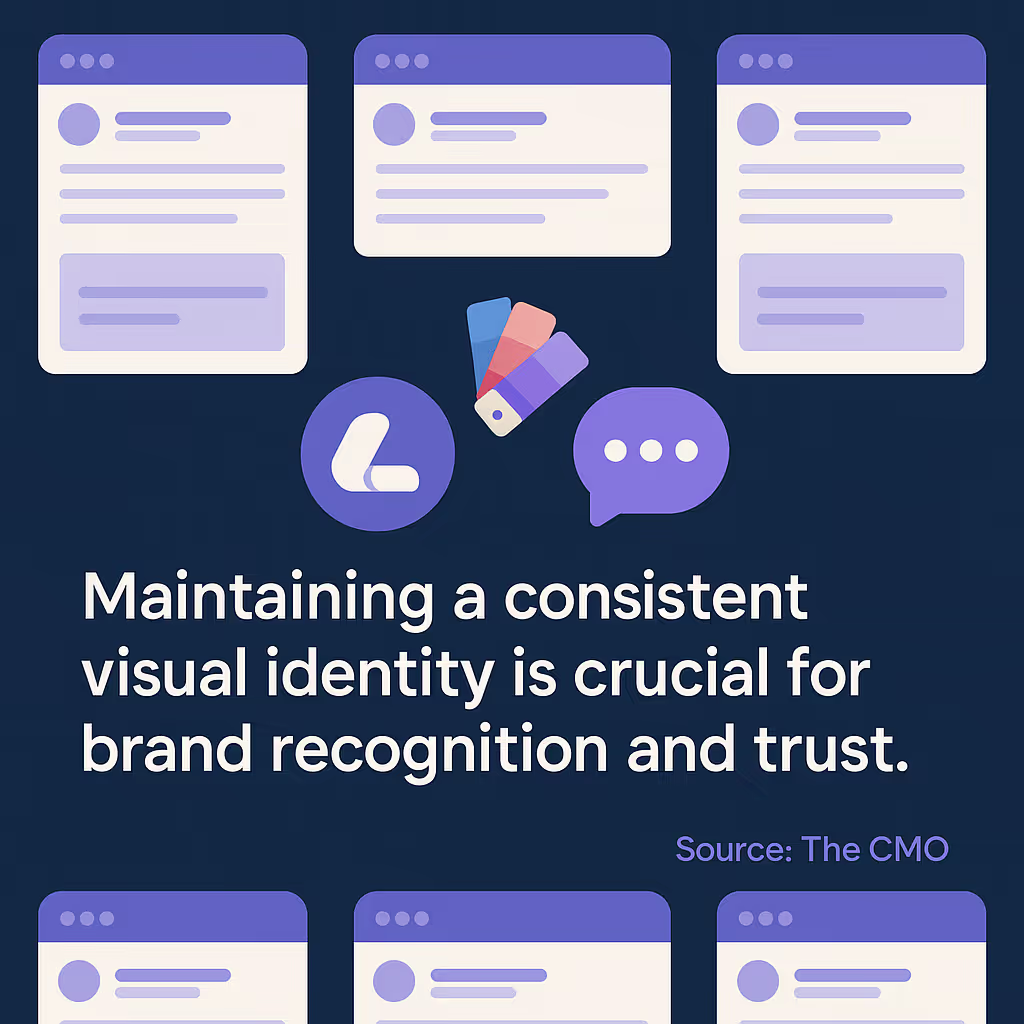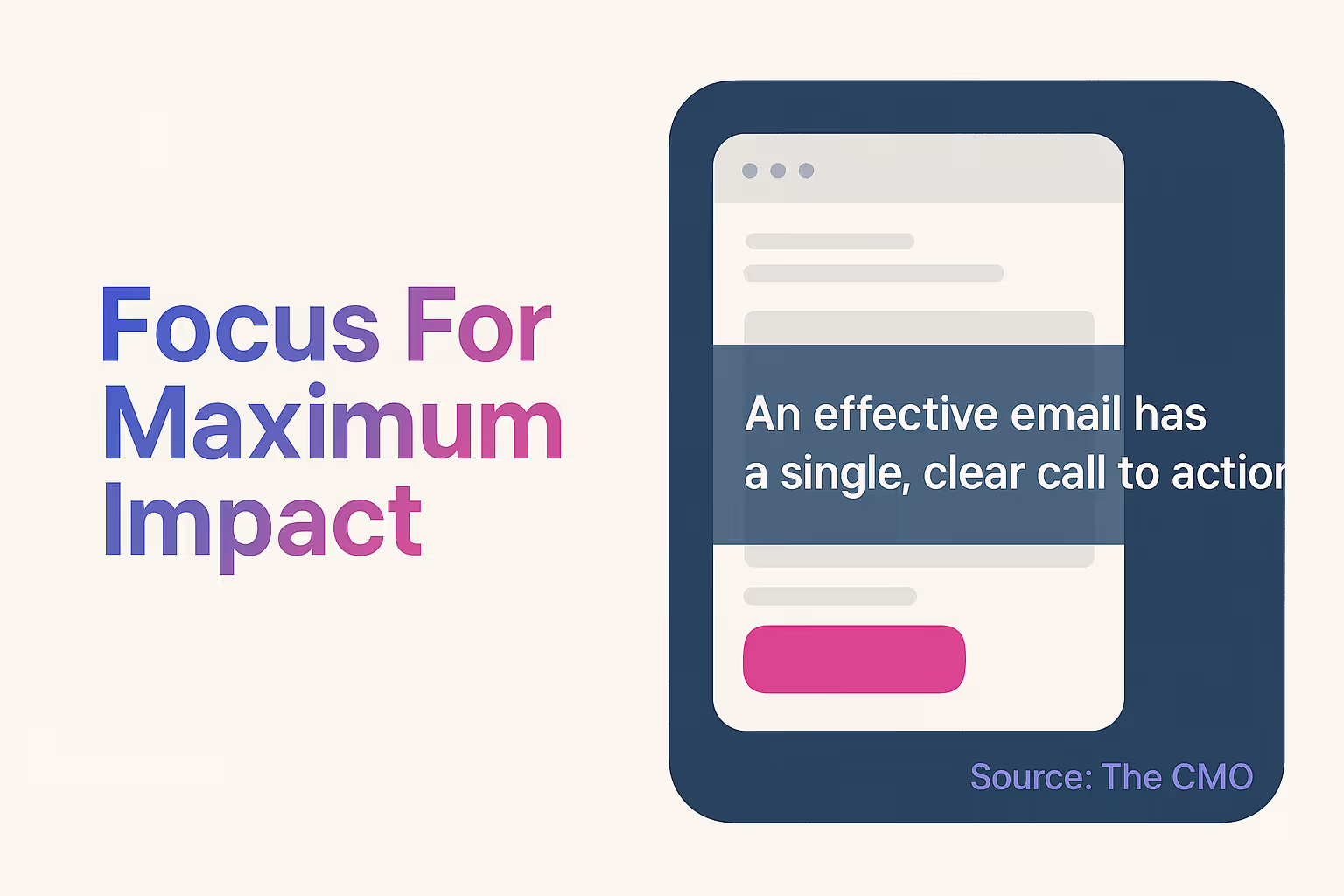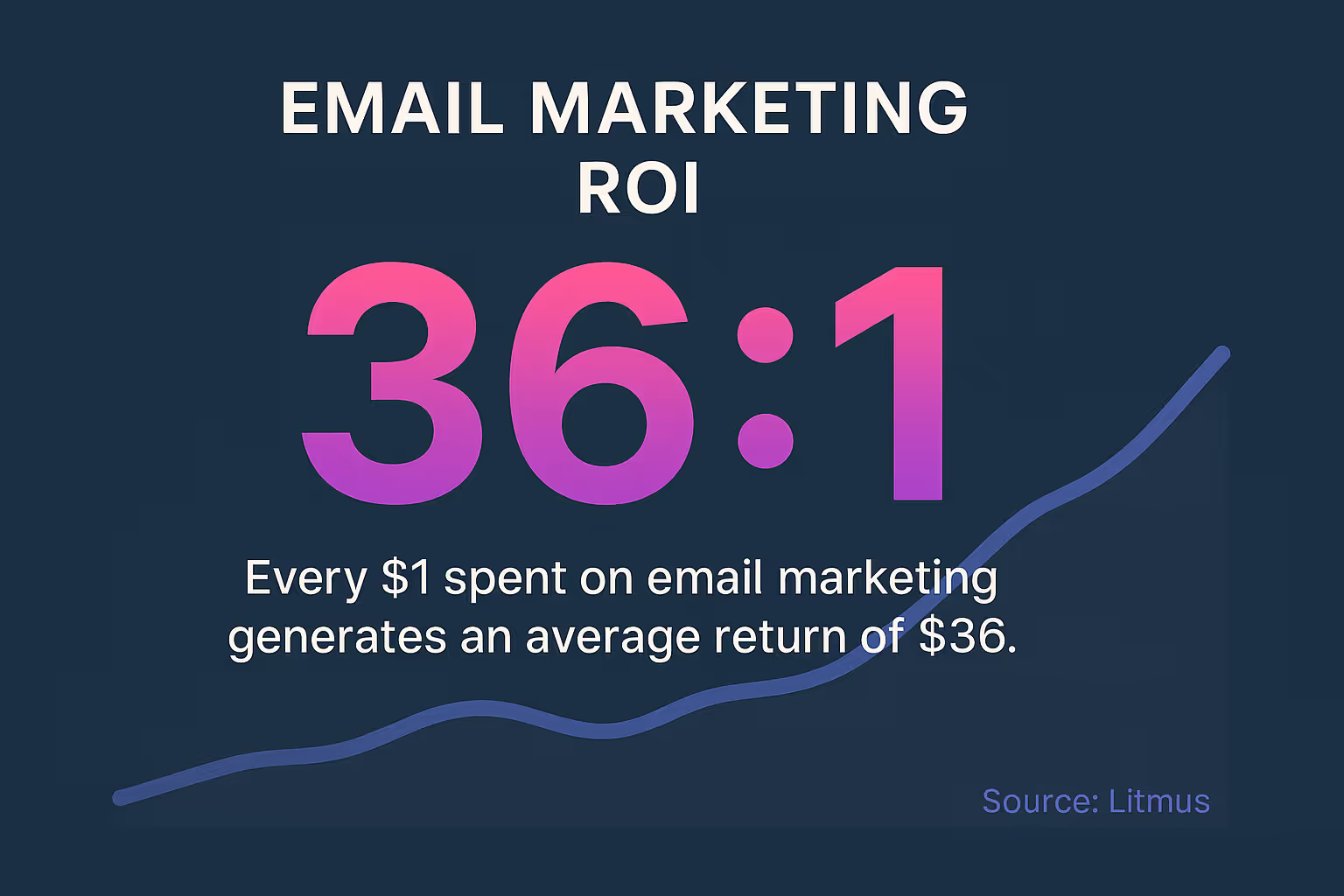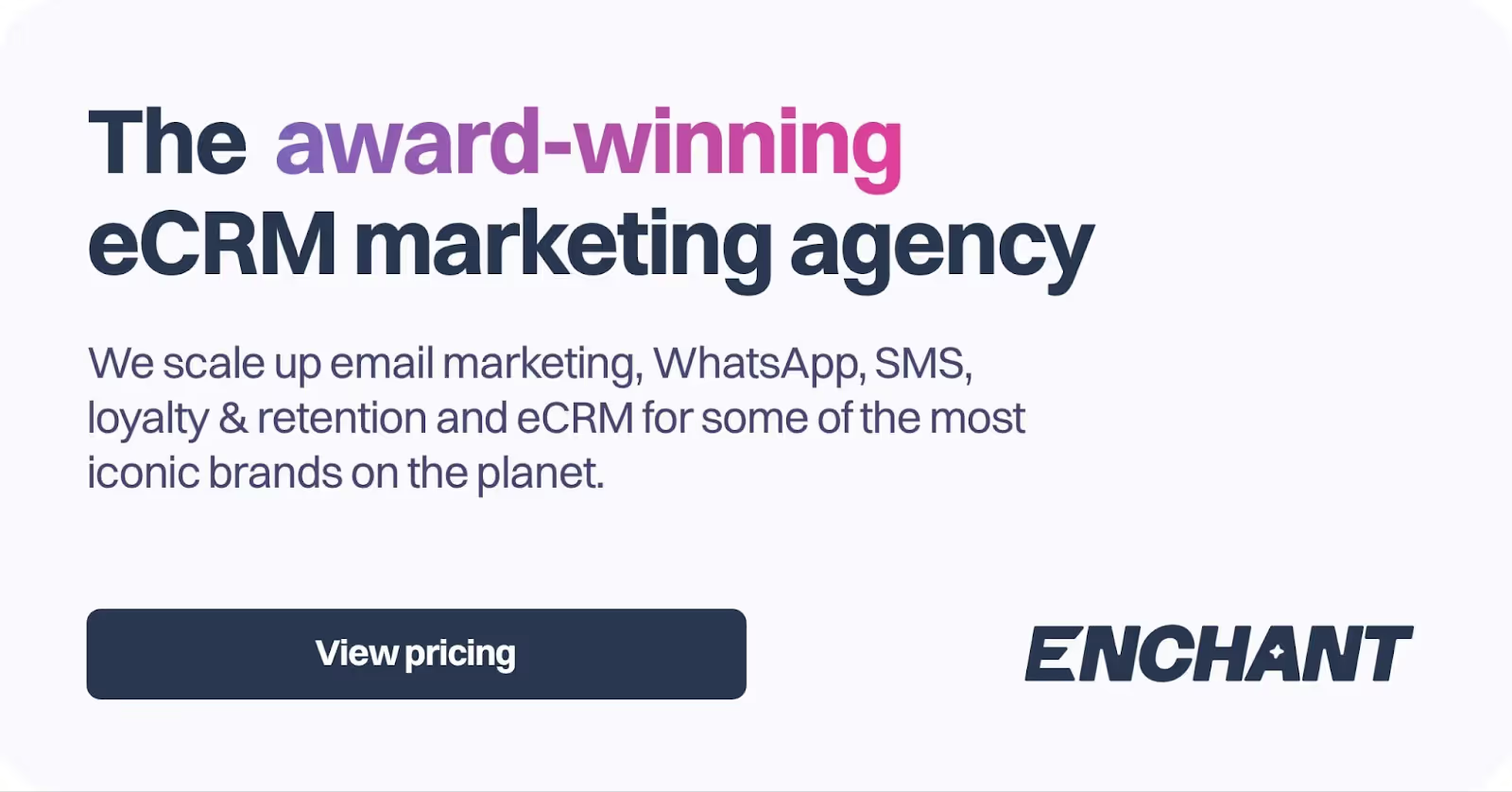What Are the Key Parts to Creating a Consistent Experience in Your Marketing Emails?
Picture this: a subscriber receives your welcome email with sleek branding and professional messaging, then gets hit with a promotional email that looks completely different and sounds like it came from another company entirely. That jarring experience is exactly what drives people to hit unsubscribe faster than you can say "brand consistency." We understand this frustration because we see it happen to small and medium-sized businesses every day. When your email marketing lacks cohesion, you're essentially asking your audience to rebuild trust with your brand each time they open your inbox.
Creating consistent email experiences isn't just about slapping your logo on every message and calling it a day. It's about building a reliable relationship with your subscribers through predictable design elements, messaging tone, and user experience across every single touchpoint. The stakes are higher than many business owners realize because inconsistency doesn't just confuse your audience, it actively undermines the trust you've worked so hard to build.
This guide breaks down the essential components that transform scattered email campaigns into a cohesive brand experience. We'll walk you through the strategic foundation, visual identity elements, content consistency frameworks, and technical considerations that ensure your emails deliver the same professional experience whether someone opens them on their phone during lunch or at their desk on a Monday morning. You'll also discover how to measure and optimize these consistency efforts to maximize engagement and build stronger customer relationships.
Building Your Email Consistency Foundation
The foundation of consistent email experiences starts with establishing clear brand guidelines that extend beyond your website into every email you send. Your subscribers should instantly recognize your emails in a crowded inbox, not because of flashy design elements, but because of the cohesive brand identity you've carefully crafted. This means developing a documented set of standards that every email campaign follows, from the color palette to the tone of voice you use when addressing customer concerns.
Smart businesses treat their email channel as a direct extension of their brand experience, not as a separate marketing afterthought. When someone interacts with your brand through email, they should feel the same level of professionalism and attention to detail they'd experience on your website or in your physical store. This consistency builds the kind of trust that transforms one-time purchasers into loyal customers who actually look forward to hearing from you.
The most effective approach involves creating what we call an email brand guide that sits alongside your main brand guidelines. This document should specify everything from your primary and secondary colors to the specific words and phrases that align with your brand personality. Without this foundation, even the most well-intentioned marketing teams end up creating emails that feel disconnected and unprofessional.
Establishing Your Email Brand Voice
Your email brand voice goes far deeper than simply avoiding overly formal language or throwing in a few exclamation points. It's about developing a consistent personality that resonates with your target audience while staying authentic to your company values. We've found that the most successful small and medium-sized businesses develop voice guidelines that feel natural rather than forced, allowing customer service teams and marketing professionals to communicate confidently without second-guessing every word choice.
The process starts by analyzing your most successful customer interactions and identifying the language patterns that generated positive responses. Are your customers responding better to direct, action-oriented language or do they prefer more conversational and educational approaches? The answer varies dramatically by industry and audience, which is why cookie-cutter voice guidelines rarely produce the engagement results that businesses are hoping to achieve.
Creating Template Systems That Scale
Template systems provide the structural backbone that allows your team to create new email campaigns efficiently while maintaining visual and content consistency. The secret lies in building templates that are flexible enough to accommodate different types of content while strict enough to prevent major design departures that confuse subscribers. This balance requires careful planning but pays dividends when you need to launch campaigns quickly without sacrificing quality.
Consider developing separate template families for different types of communications rather than trying to force every message into a single format. Your welcome email series might benefit from more visual storytelling elements, while your weekly newsletter might prioritize scannable content blocks that busy subscribers can consume quickly. The key is ensuring that despite these functional differences, subscribers still recognize each email as unmistakably yours.
Visual Identity and Design Consistency
Visual consistency serves as the silent brand ambassador that builds recognition and trust before subscribers even read your first sentence. When you get this right, people instinctively know they're dealing with a professional organization that pays attention to details. The challenge lies in creating visual elements that work seamlessly across different email clients and device sizes while maintaining the sophisticated appearance that builds credibility with your audience.
The most effective approach involves establishing a clear visual hierarchy that guides readers through your content naturally. Use your brand's logo, color palette, and voice in every email to reinforce recognition and trust (Source: The CMO). This doesn't mean every email should look identical, but rather that they should feel like they belong to the same carefully curated brand family.

Smart businesses also recognize that visual consistency extends to their transactional emails, not just promotional campaigns. Your order confirmation emails, shipping notifications, and password reset messages all represent opportunities to reinforce your brand identity and maintain the professional experience your customers expect from every interaction.
- Limit your emails to three or fewer typefaces to ensure readability and a professional appearance
- Stick to a clear visual hierarchy with consistent use of headings, subheadings, and body text formatting
- Design for mobile first, as the majority of emails are now opened on mobile devices
- Maintain consistent spacing and alignment across all email elements
- Use brand colors strategically to highlight important information without overwhelming the design
Logo and Header Consistency
Your email header serves as the digital storefront that sets expectations for the entire message. Incorporate branding into transactional and promotional emails alike for a seamless customer experience (Source: The CMO). This means your logo placement, size, and surrounding elements should follow the same standards whether someone is reading your monthly newsletter or their purchase receipt.
The most professional approach involves creating header templates that accommodate different content lengths while maintaining the same visual weight and brand presence. Your email marketing logos and brand elements should work harmoniously with your overall design rather than competing for attention with your primary message.
Color Scheme and Typography Standards
Color psychology plays a significant role in how subscribers perceive and interact with your emails, making consistent color application essential for building trust and encouraging action. Your primary brand colors should appear in predictable locations across every email, whether you're highlighting a call-to-action button or drawing attention to important deadline information. This predictability helps subscribers navigate your content more efficiently while reinforcing your brand identity.
Typography choices communicate just as much about your brand personality as your word choices do. Limit your emails to three or fewer typefaces to ensure readability and a professional appearance (Source: Moosend). The fonts you choose should remain consistent across all email types, from promotional campaigns to automated follow-up sequences, creating a cohesive reading experience that feels intentional rather than haphazard.
Content Consistency and Messaging Framework
Content consistency extends far beyond maintaining the same writing style across your email campaigns. It involves developing a messaging framework that ensures every piece of information you share aligns with your brand values and customer expectations. We've observed that businesses with strong content consistency frameworks experience higher engagement rates because their subscribers know exactly what type of value they'll receive each time they open an email.
The foundation of effective content consistency lies in understanding your audience's needs and delivering information that consistently meets those expectations. Prioritize simplicity and clarity in messaging; focus on a single call-to-action per email to avoid confusion (Source: The CMO). This approach prevents the decision paralysis that leads to lower click-through rates and helps subscribers understand exactly what action you want them to take.

Balance promotional content with educational value to keep audiences engaged (Source: The CMO). The most successful businesses we work with treat their email channel as a trusted resource rather than just a sales tool, which builds the kind of long-term relationships that drive sustainable revenue growth.

Tone and Voice Alignment
Maintaining consistent tone and voice across different types of email content requires more strategic thinking than many business owners initially realize. Your welcome email series might adopt a more enthusiastic and welcoming tone, while your customer service emails should prioritize clarity and helpfulness. The challenge lies in ensuring these variations feel like natural expressions of your brand personality rather than completely different communication styles.
Successful businesses develop tone guidelines that specify how their brand voice adapts to different situations while maintaining core personality traits. For example, your brand might always prioritize being helpful and straightforward, but express those qualities more formally in billing communications and more casually in community newsletter updates. This approach allows for appropriate situational variation while maintaining the consistency that builds trust.
Information Hierarchy and Structure
The way you organize information within your emails directly impacts how effectively subscribers can consume and act on your content. Place the most important information at the top of your emails for maximum impact (Source: Moosend). This "above the fold" principle becomes even more critical when you consider that many subscribers make engagement decisions within the first few seconds of opening an email.
Consistent information hierarchy means that subscribers learn where to look for specific types of information, making your emails easier to scan and navigate. Your email marketing strategy should specify standard locations for elements like your primary call-to-action, social media links, and unsubscribe information to create a predictable user experience that reduces cognitive load for your readers.
Technical Implementation and Cross-Platform Consistency
Technical consistency ensures that your carefully crafted brand experience translates properly across the dozens of different email clients and devices your subscribers use to access their messages. We've seen beautifully designed emails that look perfect in one email client but completely fall apart in another, creating an unprofessional impression that damages brand credibility and frustrates subscribers who can't engage with your content as intended.
The most reliable approach involves testing your emails across different clients and devices to ensure design consistency everywhere (Source: Litmus). This testing process should become a standard part of your email deployment workflow rather than an occasional quality check, because email client behavior changes can impact your design rendering without warning.
Automation tools can help streamline this process for agencies or businesses managing large volumes of campaigns (Source: Litmus). The investment in proper testing infrastructure pays for itself by preventing the subscriber confusion and engagement drops that result from poorly rendered emails.
Email Client Compatibility
Different email clients interpret HTML and CSS code differently, which means an email that displays perfectly in Gmail might have serious layout issues in Outlook. This variability requires a proactive approach to compatibility testing that goes beyond simply checking your emails in one or two popular clients. Your subscribers likely use a diverse mix of email platforms, and each deserves the same professional experience regardless of their technology choices.
The solution involves developing email templates using coding practices that prioritize compatibility over advanced design features. While this might mean sacrificing some visual flourishes, it ensures that your core brand message and functionality remain intact across all platforms. The most successful email campaign designs strike a balance between visual appeal and technical reliability.
Mobile Responsiveness Standards
Mobile responsiveness has evolved from a nice-to-have feature to an absolute necessity for professional email marketing. Design for mobile first, as the majority of emails are now opened on mobile devices (Source: Moosend). This mobile-first approach means planning your email layout and content hierarchy with small screens in mind, then adapting the design for desktop viewing rather than the reverse.

Consistent mobile experiences require more than just responsive templates; they demand careful consideration of touch targets, reading patterns, and the limited attention spans that characterize mobile email consumption. Your call-to-action buttons should be easily tappable, your text should remain readable without zooming, and your most important information should appear within the first screen of content on typical smartphone displays.
Personalization Within Consistency
The challenge of maintaining brand consistency while delivering personalized experiences requires a strategic approach that balances individual relevance with cohesive brand presentation. We've observed that the most successful businesses develop personalization strategies that enhance their core brand experience rather than fragmenting it across dozens of different message variations. This approach allows you to speak directly to individual subscriber needs while maintaining the professional consistency that builds trust and recognition.
Personalize emails based on user behavior or purchase history using AI-driven tools that automate send times based on engagement likelihood (Source: Small Business Xchange). The key lies in treating personalization as an enhancement to your consistent brand experience rather than a replacement for it. Your personalized product recommendations should appear within the same template framework and follow the same visual hierarchy as your standard promotional emails.
Segment audiences using integrated customer data platforms that unify data from multiple touchpoints for targeted campaigns (Source: Small Business Xchange). This unified approach ensures that your personalization efforts complement your consistency goals rather than working against them by creating disconnected subscriber experiences.
Dynamic Content and Segmentation
Dynamic content allows you to deliver relevant information to different subscriber segments while maintaining the same overall email structure and brand presentation. Your email marketing list segmentation tactics should work within your established consistency framework to ensure that a personalized email for new subscribers looks and feels like it belongs to the same brand family as emails sent to long-term customers.
The most effective implementation involves creating content modules that can be mixed and matched based on subscriber characteristics while maintaining the same visual design standards and messaging tone. This modular approach allows for significant personalization without requiring completely separate template systems that could dilute your brand consistency efforts.
Behavioral Triggers and Automation
Automated email sequences triggered by specific subscriber behaviors offer excellent opportunities to demonstrate consistent brand experiences across the customer journey. Your abandoned cart emails, post-purchase sequences, and re-engagement campaigns should all feel like natural extensions of your main email program rather than disconnected messages that happen to come from your domain.
This consistency becomes particularly important in automated sequences where subscribers might receive multiple emails over several days or weeks. Each message should build upon the previous one while maintaining the same professional standards and personality traits that characterize your brand. The goal is to create seamless customer journeys that feel intentionally crafted rather than randomly assembled.
Measuring and Optimizing Email Consistency
Measuring the effectiveness of your consistency efforts requires tracking metrics that go beyond basic open and click rates to include indicators of long-term subscriber engagement and brand perception. We recommend monitoring metrics such as subscriber lifetime value, email-to-website traffic quality, and customer feedback sentiment to understand how consistency impacts your overall business relationships rather than just individual campaign performance.
Use A/B testing for subject lines, design elements, and calls-to-action; continuous review of performance analytics is critical (Source: The CMO). The most valuable testing focuses on consistency elements like template variations, brand voice approaches, and visual hierarchy changes to identify the approaches that strengthen rather than weaken your overall brand experience.
Regular analysis should examine both quantitative performance data and qualitative subscriber feedback to build a complete picture of how your consistency efforts impact customer relationships. The businesses that excel at this process treat consistency measurement as an ongoing optimization opportunity rather than a one-time assessment project.
Performance Tracking and Analytics
Monitor key metrics such as open rate, click-through rate, conversion rate, and bounce rate as essential benchmarks in evaluating campaign success (Source: Use Insider). However, consistency measurement requires looking at these metrics across campaign types and time periods to identify patterns that indicate whether your brand experience is strengthening or fragmenting over time.
The most valuable insights come from comparing performance data between consistently branded campaigns and messages that deviate from your established standards. This analysis helps you understand the direct business impact of consistency efforts and provides concrete evidence for maintaining design and messaging standards even when team members might be tempted to try dramatically different approaches.
Subscriber Feedback and Engagement Patterns
Direct subscriber feedback provides qualitative insights that complement your quantitative performance data, helping you understand how consistency efforts impact the customer experience from the recipient's perspective. Regular surveys and feedback requests can reveal whether subscribers perceive your emails as professional and trustworthy or if inconsistencies are creating confusion or frustration that might not show up immediately in engagement metrics.
Pay particular attention to feedback patterns around email recognition, content expectations, and overall brand perception. These insights can guide refinements to your consistency framework and help you prioritize the elements that have the greatest impact on subscriber satisfaction and long-term engagement. Your email marketing best practices implementation should evolve based on this feedback to continuously improve the subscriber experience.
Common Consistency Challenges and Solutions
Even the most well-intentioned marketing teams encounter obstacles when implementing consistent email experiences across their campaigns. We regularly help businesses address challenges ranging from team coordination issues to technical limitations that can undermine otherwise solid consistency strategies. The key lies in anticipating these common pitfalls and developing systems that prevent them from derailing your brand experience goals.
One of the most frequent issues we encounter involves multiple team members creating emails without clear guidelines or approval processes. This situation typically results in gradual brand drift where each new campaign deviates slightly from established standards until the overall email program no longer feels cohesive. The solution involves creating clear workflows and approval checkpoints that catch consistency issues before emails reach subscriber inboxes.
Technical challenges also pose significant obstacles, particularly for businesses using multiple email tools or platforms that don't integrate seamlessly. These fragmented systems often lead to inconsistent subscriber data, template variations, and tracking discrepancies that make it difficult to maintain unified brand experiences across different types of campaigns.
- Document detailed brand guidelines specific to email marketing that complement your general brand standards
- Implement approval workflows that require consistency checks before campaign deployment
- Train all team members who create or approve email content on your consistency standards
- Regularly audit your email campaigns to identify and address consistency gaps
- Invest in integrated tools that support rather than hinder your consistency efforts
Team Coordination and Brand Guidelines
Successful consistency implementation requires clear communication and coordination among all team members who contribute to your email marketing efforts. This includes not just marketing professionals, but also customer service representatives, sales team members, and any external contractors who might create email content on your behalf. Each person needs to understand their role in maintaining your brand standards and have access to the resources they need to implement those standards correctly.
The most effective approach involves creating role-specific guidelines that explain how consistency standards apply to different types of email content and responsibilities. Your customer service team might need different guidance than your promotional campaign creators, but both groups should understand how their efforts contribute to the overall subscriber experience and brand perception.
Technology and Platform Integration
Technology choices can either support or undermine your consistency efforts, making platform evaluation and integration critical components of your overall strategy. Look for email marketing tools that offer template management features, brand asset libraries, and approval workflow capabilities that streamline consistency implementation rather than treating it as an afterthought.
Consider how your email marketing platform integrates with your other business systems, including customer relationship management software, e-commerce platforms, and analytics tools. Seamless integration supports consistency by ensuring that subscriber data, branding elements, and performance tracking remain aligned across all your marketing activities. Your multichannel digital messaging approach should reinforce rather than fragment your email consistency efforts.
Advanced Consistency Strategies
Once you've mastered the fundamentals of email consistency, advanced strategies can help you build even stronger subscriber relationships while streamlining your email marketing operations. These approaches focus on creating systems and processes that scale consistency efforts as your business grows and your email program becomes more sophisticated. The goal is to maintain the same professional brand experience whether you're sending 100 emails per month or 100,000.
Advanced consistency strategies often involve developing multiple template families that serve different business functions while maintaining unified brand presentation. This approach allows for greater campaign flexibility without sacrificing the cohesive experience that builds subscriber trust and engagement. The key lies in creating templates that feel distinctly appropriate for their intended purpose while remaining unmistakably part of your brand family.
Email remains one of the most profitable owned channels with ROI up to 36:1 reported (Source: Litmus), making advanced consistency investments worthwhile for businesses serious about maximizing their email marketing returns. These strategies require more upfront planning and resource allocation, but they pay dividends through improved subscriber engagement and operational efficiency.

Cross-Campaign Integration
Cross-campaign integration ensures that subscribers experience seamless brand consistency whether they're receiving your weekly newsletter, promotional announcements, or automated follow-up sequences. This level of coordination requires careful planning and system design, but it creates the kind of professional customer experience that distinguishes your business from competitors who treat each email as an isolated communication.
The most successful implementation involves mapping the complete subscriber journey and identifying all the touchpoints where email consistency can reinforce your brand message and build stronger relationships. Your brand consistency approach should create natural connections between different campaign types while maintaining the specific functionality that makes each message type valuable to subscribers.
Seasonal and Campaign-Specific Adaptations
Seasonal marketing campaigns and special promotions present unique challenges for maintaining email consistency while acknowledging timely events and opportunities. The solution involves developing adaptation frameworks that allow for seasonal design elements and messaging adjustments while preserving your core brand identity and subscriber experience standards.
This approach might involve creating seasonal color palettes that complement your primary brand colors, or developing messaging guidelines that specify how your brand voice adapts to different promotional contexts. The goal is to ensure that a holiday promotion email still feels like a natural extension of your regular email program rather than a completely different communication style that might confuse subscribers about your brand identity.

The Long-Term Impact of Email Consistency
Building consistent email experiences requires significant upfront investment in planning, system development, and team training, but the long-term business benefits justify this effort through improved subscriber relationships, higher engagement rates, and stronger brand recognition. We've observed that businesses with strong email consistency frameworks experience less subscriber churn, higher customer lifetime values, and more efficient email marketing operations that scale effectively as their programs grow.
The compounding effect of consistency becomes most apparent over time as subscribers develop trust and expectations around your brand communications. This trust translates into higher engagement rates, more favorable spam filtering, and increased word-of-mouth referrals that expand your email list with high-quality subscribers who are already predisposed to engage with your content.
Perhaps most importantly, email consistency creates a foundation for long-term customer relationships that extend far beyond individual campaigns or promotional sequences. When subscribers know they can rely on your emails to deliver consistent value and professional experiences, they're more likely to remain engaged with your brand through market changes, competitive pressures, and the natural evolution of their own needs and preferences. This reliability becomes a significant competitive advantage that strengthens your business relationships and supports sustainable revenue growth through effective email marketing.




.svg)
.avif)












